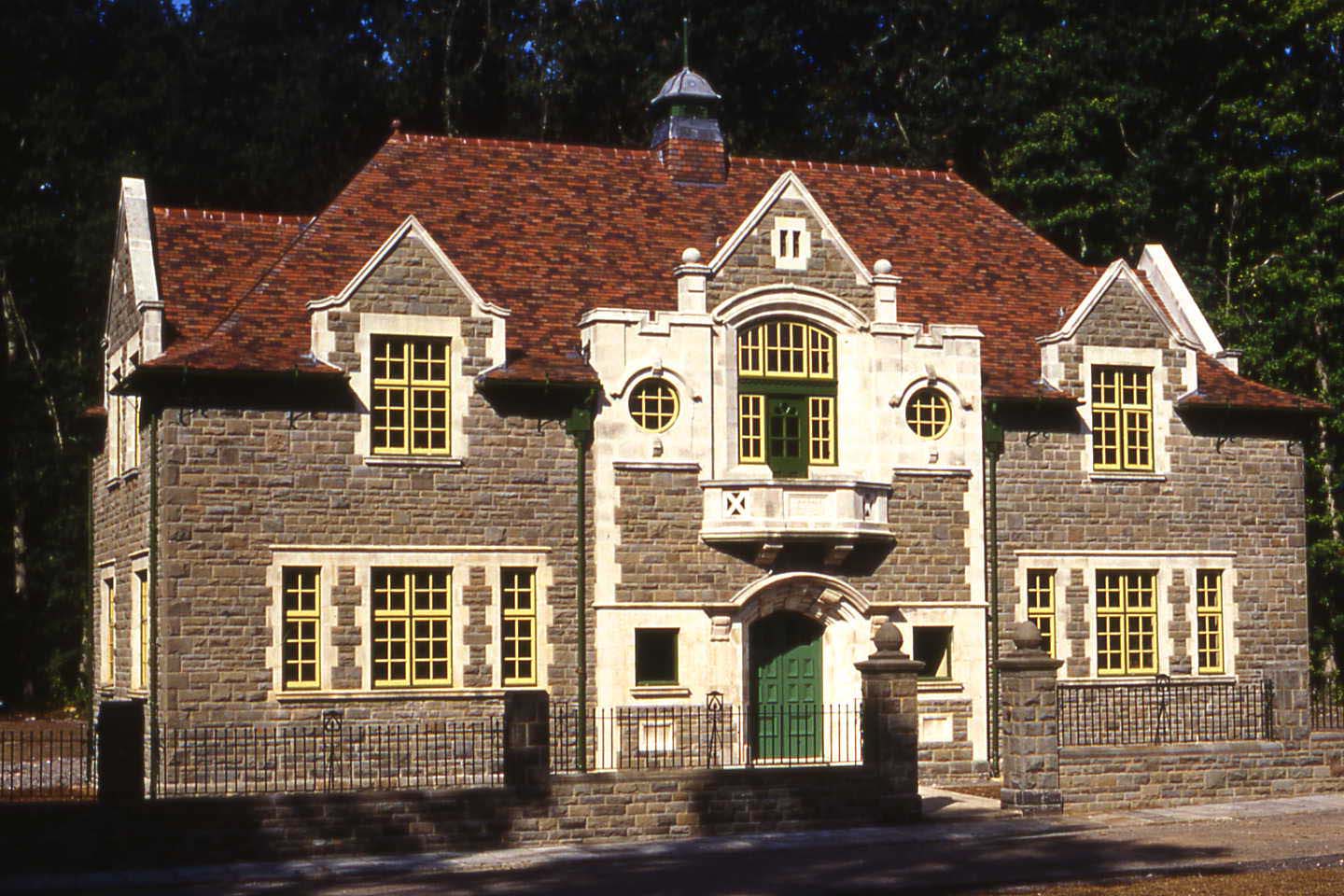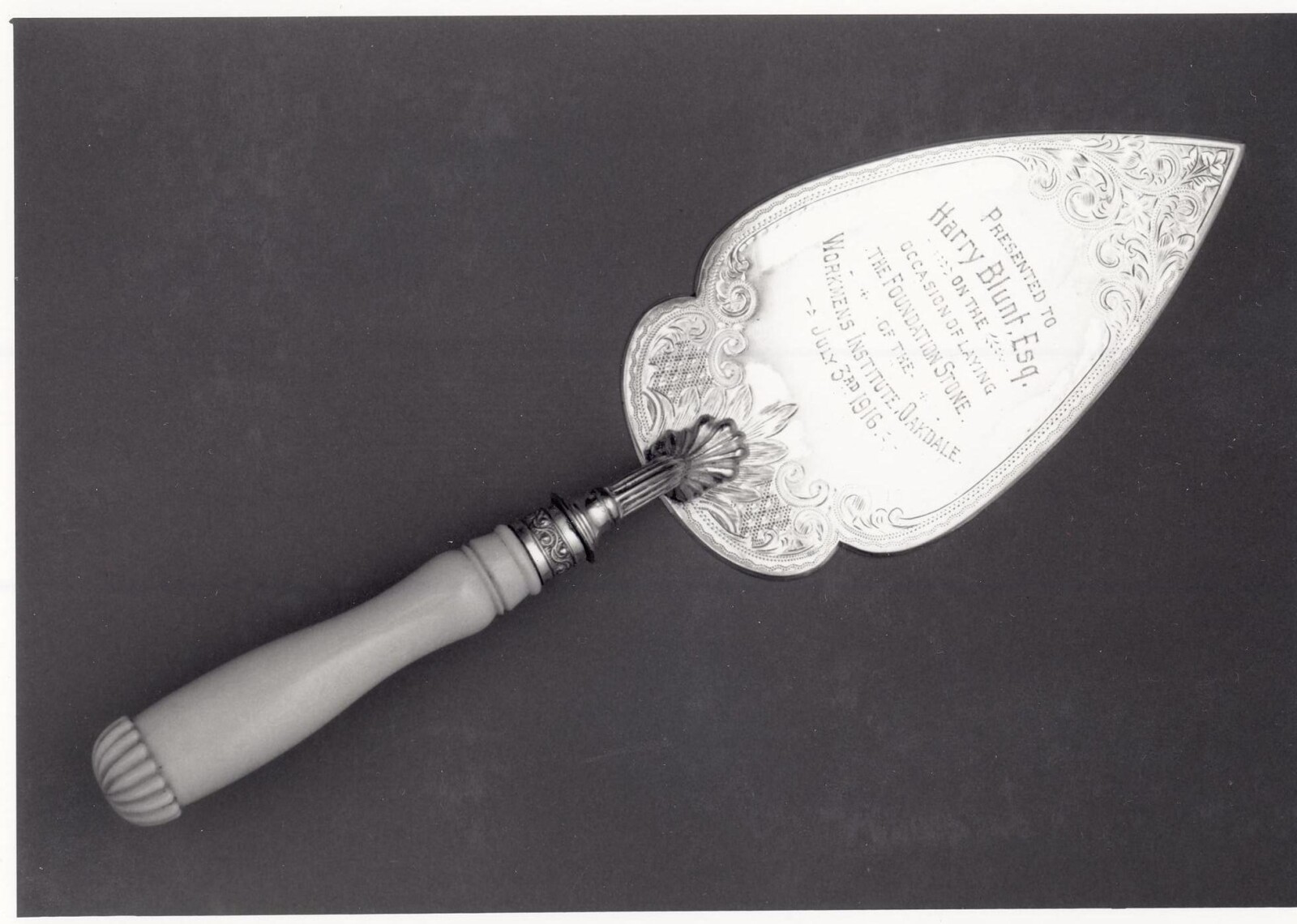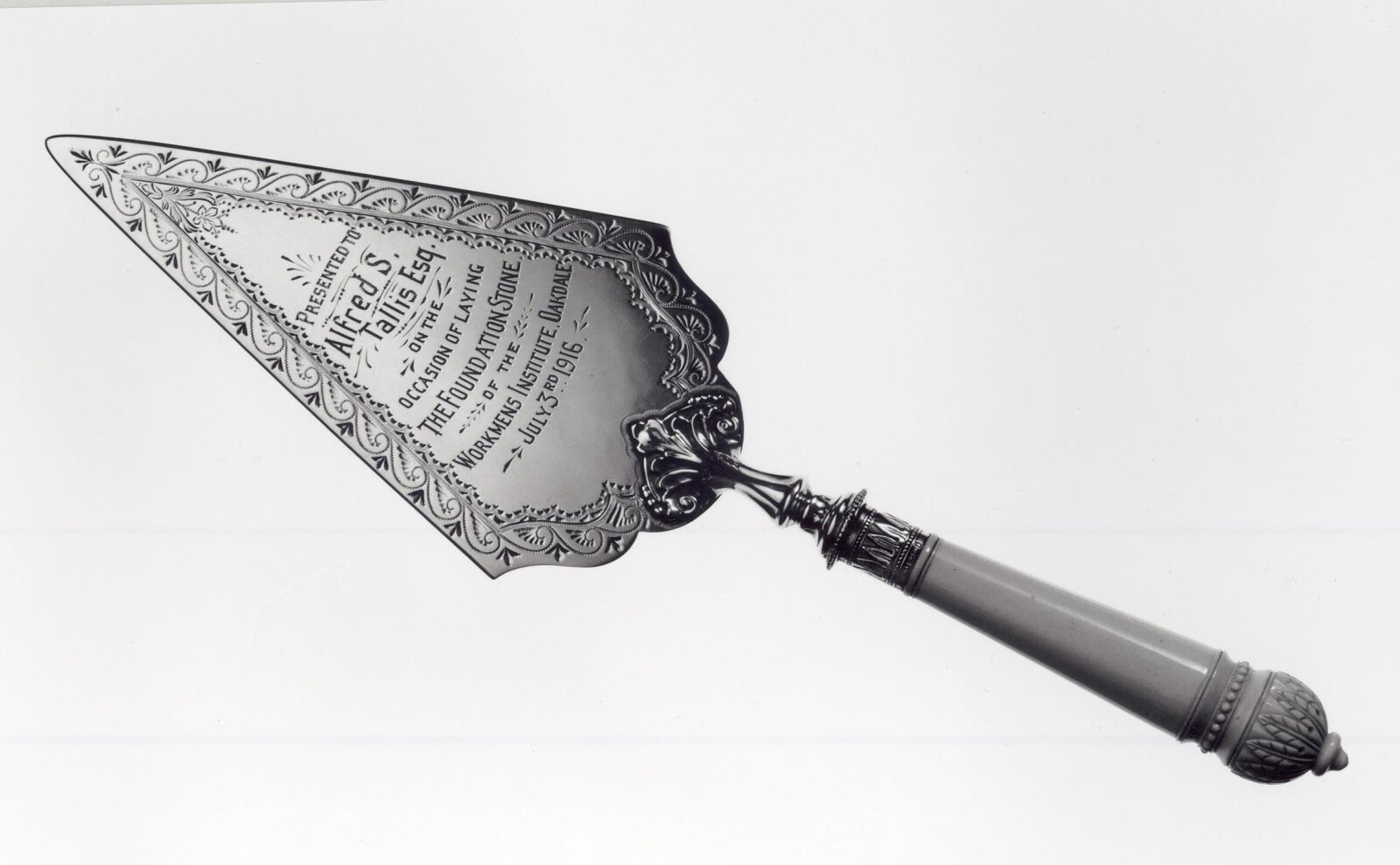Building on strong foundations: Oakdale Workmen’s Institute
, 1 July 2016
In 2017 St Fagans National History Museum will be celebrating the 100th anniversary of the Oakdale Workmen’s Institute. The building was at the heart of Oakdale village community for 80 years until it closed in 1987 and then moved to St Fagans.
Exactly 100 years ago, on 3 July 1916, the work of building the Institute in Oakdale began when a ceremony was held to lay the first foundation stones. This type of ceremony is common when large public buildings are built to mark the beginning of the main construction phase. During the ceremony, a trowel is used to place the mortar where the foundation stone is laid and a trowel is then engraved to commemorate the ceremony.
Two foundation stones were laid at the ceremony for the Oakdale Workmen’s Institute in 1916, one on either side of the main entrance door. The stone on the left was laid by Harry Blount on behalf of the workmen of Oakdale Colliery and the stone on the right by Alfred S. Tallis representing the Tredegar Iron and Coal Company, owners of the colliery.
Harry Blount was one of the original members of the Oakdale Workmen’s Institute Committee, formed in 1913. Their meeting place in the early years was in the ‘Huts’, the old barracks which once accommodated the workers of the Oakdale Colliery shafts. In the minutes of the Committee it notes that on 6 January 1914, Harry Blount proposed that they should ‘proceed with the new Institute at once’. At the same meeting Arthur Webb was appointed as the architect and within a month his sketch plan had been accepted by the Committee.
Alfred S Tallis, Managing Director of the Tredegar Iron and Coal Company, was involved with the Institute from the beginning with the promise of a financial loan for the building work. He was also the main promoter of the idea of a model village at Oakdale for the company’s workforce with modern housing built in a rural area, away from the colliery. The work of building the new village began in 1909 and the first street, Syr Dafydd Avenue, was completed in 1913 and designed by the Institute’s architect, Arthur Webb, Tallis’s brother-in-law.
The minutes of the Committee briefly mentions the arrangements for the ceremony held on Monday 3 July 1916; there was to be a cold lunch at the Oakdale Hotel with the full Committee attending and the Oakdale Colliery Band were to play around the village half an hour before to advertise the event. The ceremony itself was at 5 o’clock and Sir Charles Edwards, M.P. was asked to attend and to speak.
The two foundation stones can still be seen either side of the Institute’s main door at St Fagans and the commemorative trowels from the ceremony are displayed on the wall of the Institute Committee Room. Both trowels were donated to the Museum in the months before the Institute re-opened at St Fagans in 1995, by Harry Blount’s grandson and by Alfred Tallis’s grand-daughters.
In 2017, the year of the centenary of Oakdale Workmen’s Institute, the Museum is planning to bring the building alive once again, to reflect its original purpose as a place for the community. We’ll be updating you on the project as we go so look out for #Oakdale100 news in the coming weeks and months.
This project is supported by the Armed Forces Community Covenant Grant Scheme.




